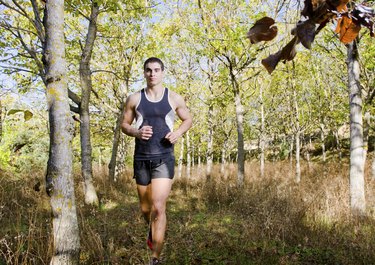
Aside from noticing an increase in your heart rate during vigorous exercise, you might not give much consideration to the complex action inside your chest that keeps you alive. But understanding your heart rate not only can help you evaluate your health, but also can help you maximize the effectiveness of your cardio workouts by ensuring your heart rate stays within the target zone.
Your Heart Rate at Rest
Video of the Day
The term "normal heart rate" describes what's technically known as your resting heart rate, which is the rate at which your heart beats when you're inactive. This rate differs for men and women and varies according to other factors, such as your age and how active you are. Top End Sports notes a person's resting heart rate can often range from the high 40s to above 80 beats per minute.
Video of the Day
Your Age and Health Play a Role
In general, the more athletic you are, the lower resting heart rate you'll experience. An athletic male between the ages of 18 and 25 will often have a resting heart rate of 49 to 55 beats per minute. A person in this age group of below-average health might have a resting heart rate between 74 and 81 beats per minute, according to Top End Sports. Your resting heart rate will increase as you age, but keeping active can result in a lower resting heart rate than someone decades younger than you. An athletic male between the ages of 36 and 45 often has a resting heart rate of 50 to 56 beats per minute, while someone of the same age with below-average health can experience a rate of 76 to 82.
Get Moving to Strengthen Your Heart
Cardiovascular exercises, which increase your heart rate, should be a key component of your workout regimen. Although many people associate this form of exercise with weight loss, it's helpful for everyone because it strengthens your heart, according to The Merck Manual Home Health Handbook. As you increase the health of this organ through exercise, it will get stronger and pump blood throughout your body with greater ease. As a result, it won't need to beat as many times per minute.
Knowing Your Heart Rate
Whether you walk briskly or swim laps in the community pool, you'll notice an increase in your heart rate. The American Heart Association recommends exercising within your target heart rate zone, which is roughly between 50 and 85 percent of your maximum heart rate. To calculate your maximum heart rate, subtract your current age from 220. A simple way to check your heart rate while at rest or during exercise is to find your pulse on the inside of your wrist and count the beats for 60 seconds.